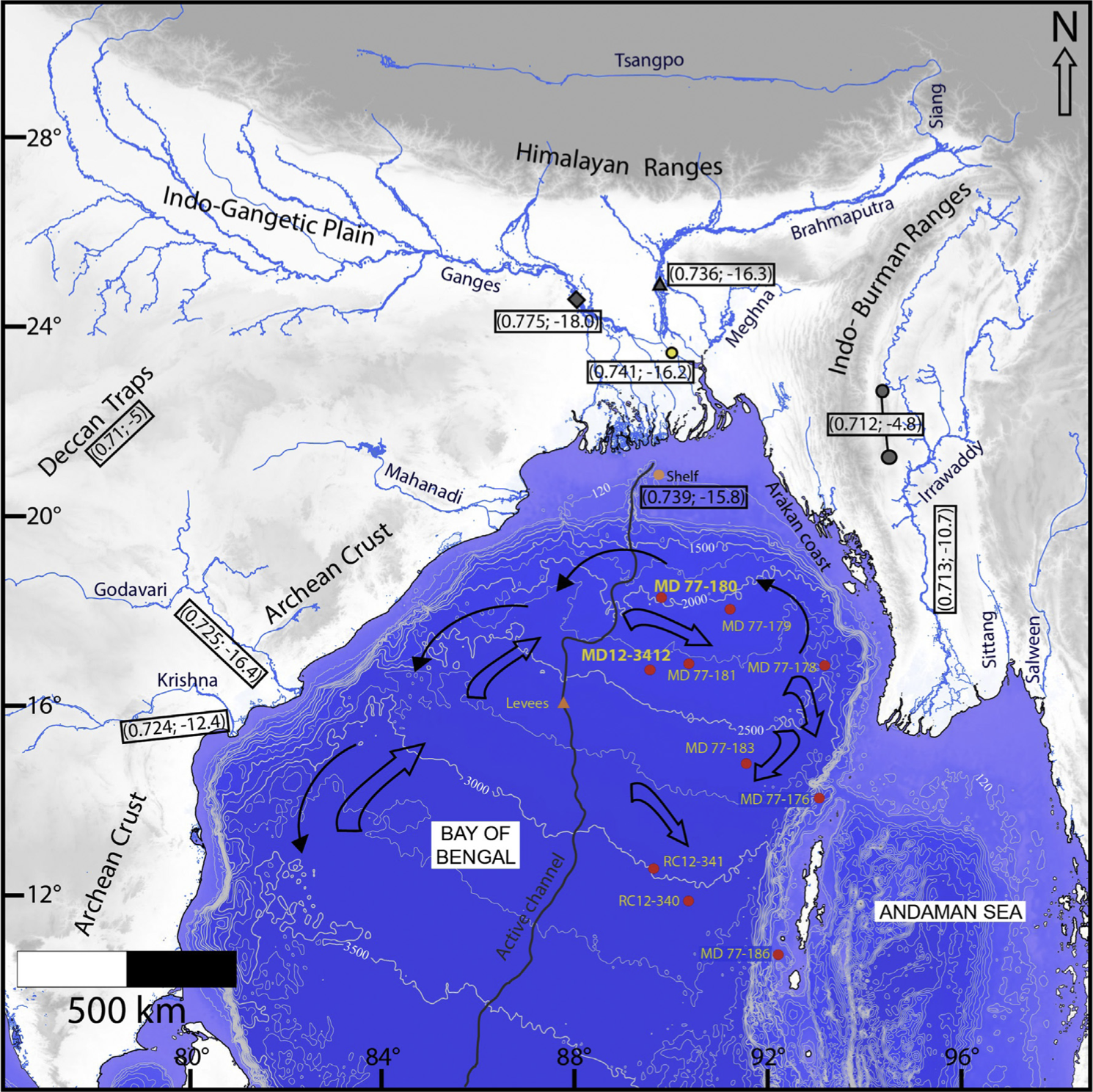Bengal Fan
from the hignest mountain to the deep sea
The Bengal Fan is fed by Himalayan-derived sediment delivered via the Brahmaputra and Ganges Rivers, and is Earth’s largest deep-water depositional system. In 2015, IODP Expedition 354 drilled seven core sites across the lower Bengal Fan at 8°N, approximately 1400 km south of the Bengal shelf margin (France-Lanord et al., 2016). Investigation of these cores revealed numerous thick sandy sediment gravity flows (hereafter SGFs) of Pleistocene age. Generally, this research aims to provide insights into how SGFs record signals of climate-driven sea-level change and other potential driving mechanisms, and how they were propagated through Earth’s largest sediment-dispersal system.
The upcoming IRSL numerical ages from the outsized SGFs will help our understanding of formative mechanisms and climatic implications, but also increase the resolution of the Pleistocene age model in the distal Bengal Fan, particularly for researchers that use detrital geochronology for provenance and sediment-routing studies. Additionally, studying woody debris within the cores will help identify favorable conditions for the flux of terrestrial organic carbon into the ocean. These insights can contribute to refining the global carbon cycle model, particularly the percentage of carbon trapped in the ocean, a topic that receives increasing attention every year in the context of global warming (Galy et al., 2007; Lee et al., 2019; Talling et al., 2024). Finally, this research has major implications for hydrocarbon exploration and production. Discovery of large sandy reservoirs in areas traditionally considered mud-rich, like the distal parts of deep marine fans, could shift focus from higher-cost, resource-intensive unconventional shale plays to sandy reservoirs in the deep sea with better porosity. This Bengal Fan study could inspire the potential of these underexplored areas as promising sites for such reservoirs.

I visited the IODP Core facility Kochi Core Center (KCC) at Kochi City, Japan three times to describe the cores and sample for luminescence dating, in total 6 weeks.


Kochi is a beautiful city with all the elements sedimentologists like: river, coastline, mountain etc.



References
-
Galy, V., C. France-Lanord, O. Beyssac, P. Faure, H. Kudrass, and F. Palhol, 2007, Efficient organic carbon burial in the Bengal fan sustained by the Himalayan erosional system: Nature, v. 450, no. 7168, p. 407–410, doi:10.1038/nature06273.
-
France-Lanord, C., Spiess, V. & Klaus, A. IODP Expedition 354 summary. (2016).
-
Lee, H., V. Galy, X. Feng, C. Ponton, A. Galy, C. France-Lanord, and S. J. Feakins, 2019, Sustained wood burial in the Bengal Fan over the last 19 My: Proceedings of the National Academy of Sciences, v. 116, no. 45, p. 22518–22525, doi:10.1073/pnas.1913714116.
-
Talling, P. J., S. Hage, M. L. Baker, T. S. Bianchi, R. G. Hilton, and K. L. Maier, 2024, The Global Turbidity Current Pump and Its Implications for Organic Carbon Cycling: Annual Review of Marine Science, v. 16, no. 1, p. null, doi:10.1146/annurev-marine-032223-103626.
-
Joussain, R., C. Colin, Z. Liu, L. Meynadier, L. Fournier, K. Fauquembergue, S. Zaragosi, F. Schmidt, V. Rojas, and F. Bassinot, 2016, Climatic control of sediment transport from the Himalayas to the proximal NE Bengal Fan during the last glacial-interglacial cycle: Quaternary Science Reviews, v. 148, p. 1–16, doi:10.1016/j.quascirev.2016.06.016.